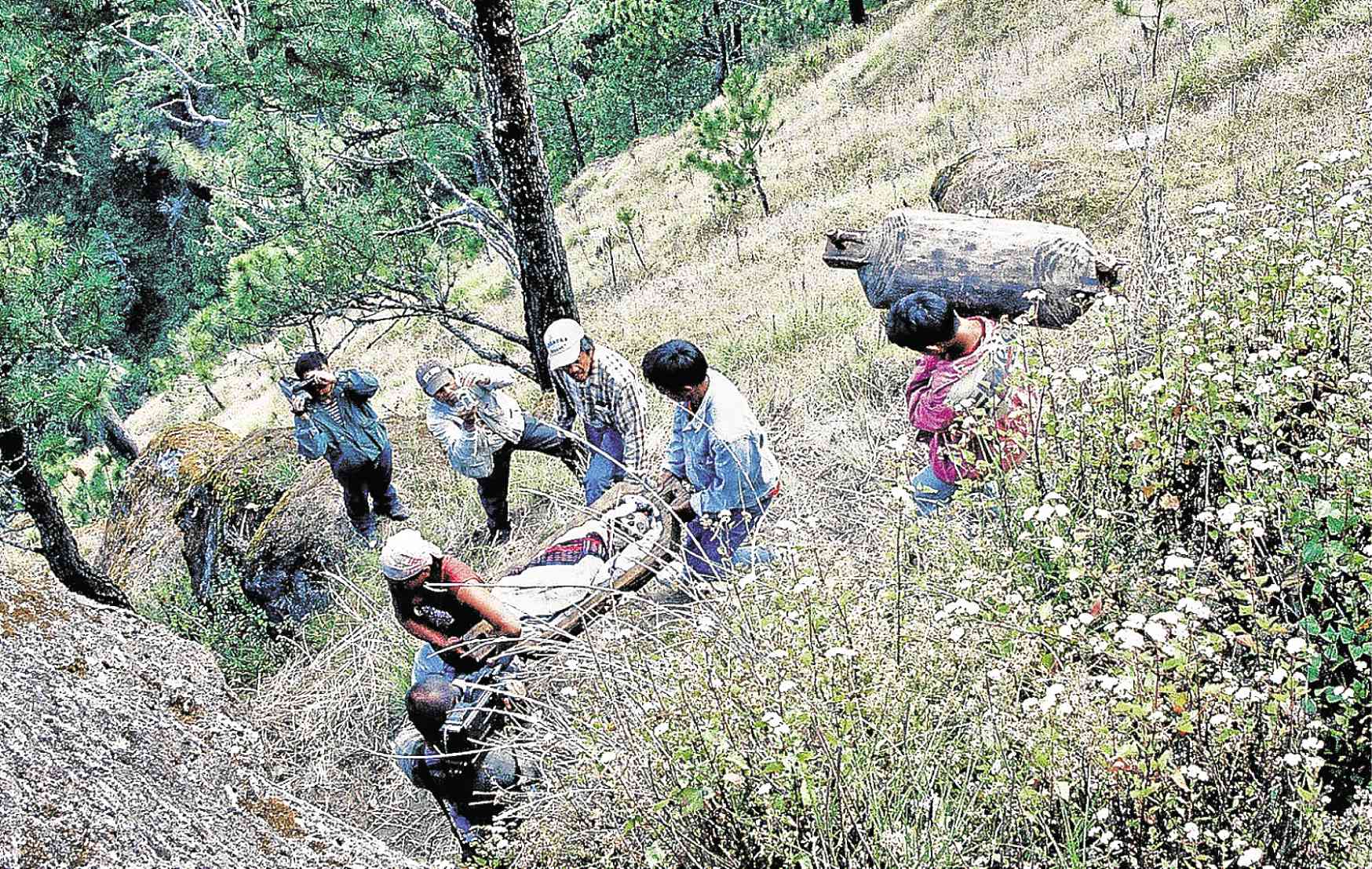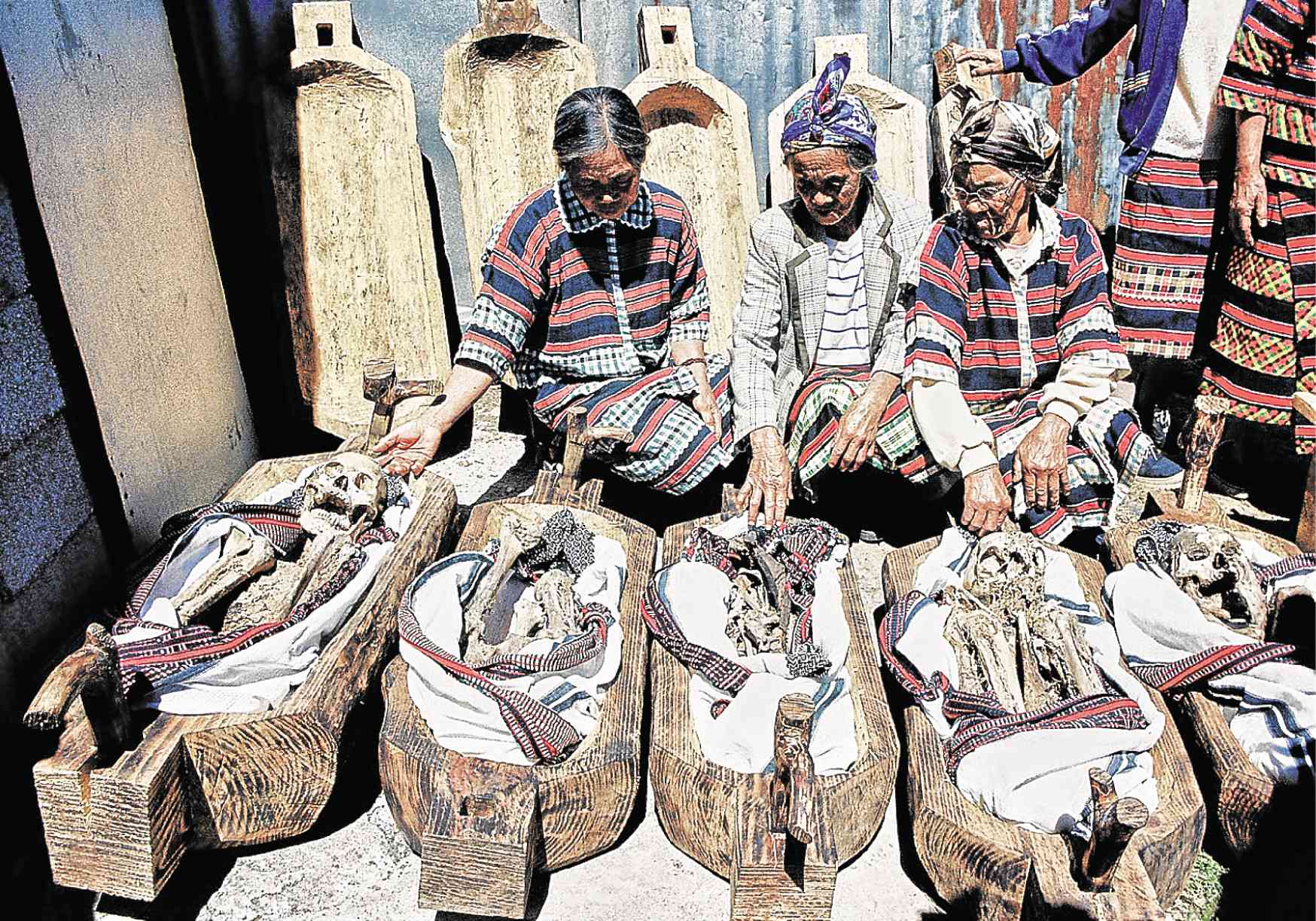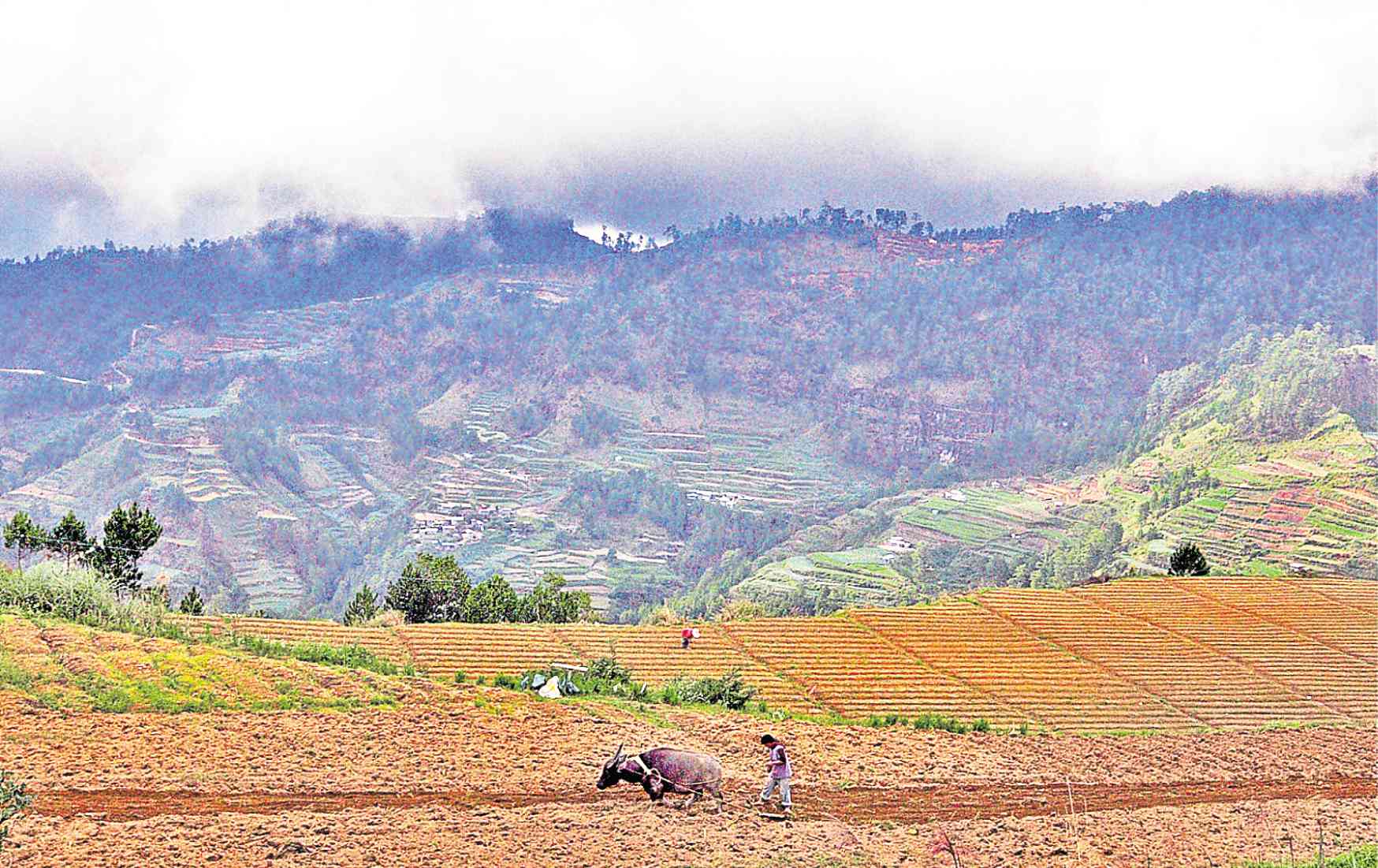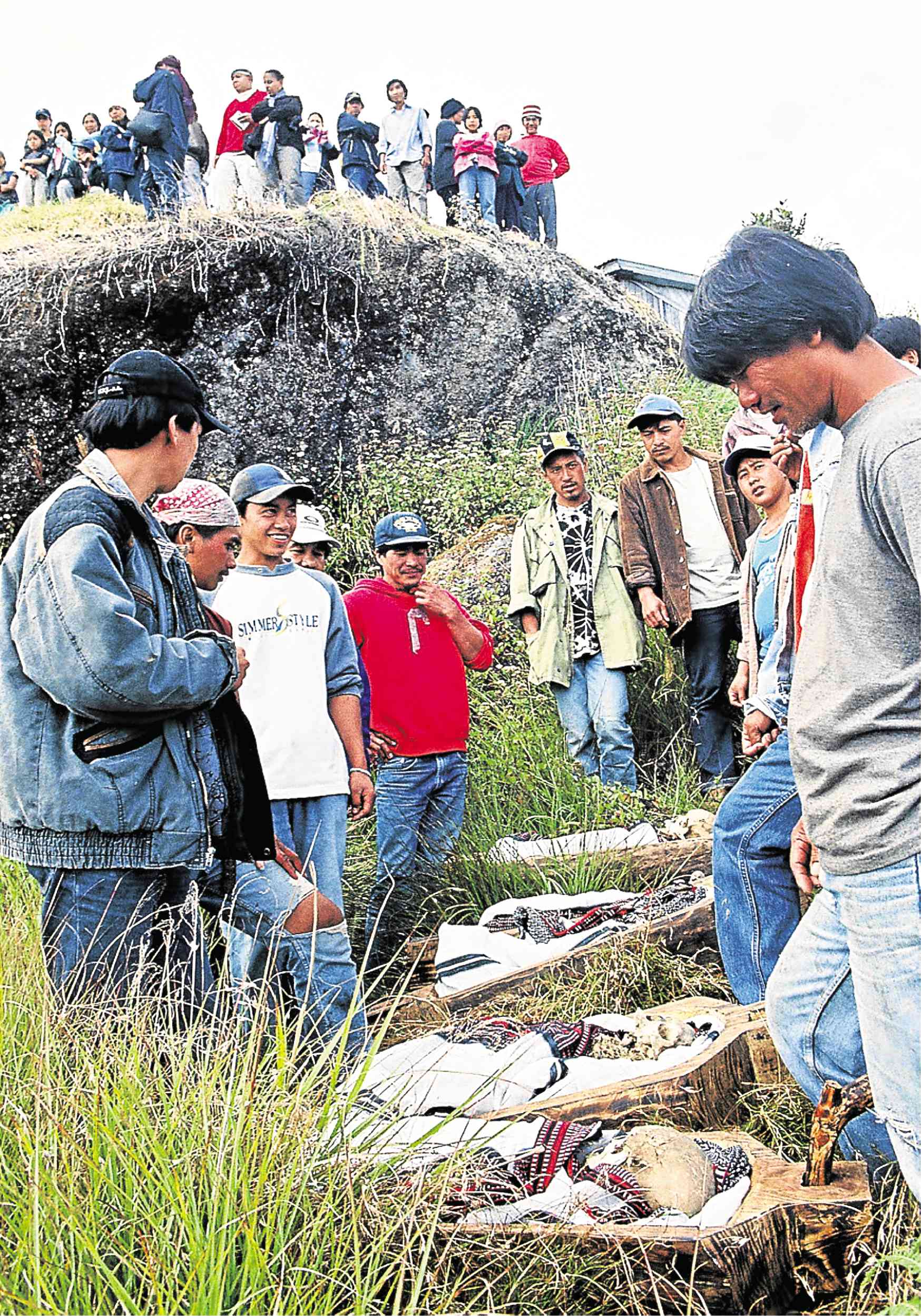Plants with extracts used on mummies thrive

MUMMIES RETURNED In this 2004 photo, the mummified remains of eight Ibaloy ancestors are returned to their burial caves at Barangay Natubleng in Buguias town, Benguet province. These mummies attracted artifact collectors at the start of the 20th century. —PHOTOS BY EV ESPIRITU
BAGUIO CITY — “Patani” is one of the healthy vegetables we all committed to memory because of the nursery song “Bahay Kubo.”
Guava is the fruit that children know because of a popular guava-flavored jelly spread for sandwiches.
But these nutritious food were also essential ingredients for Ibaloy mummification in pre-Spanish Benguet province, according to a University of the Philippines (UP) Baguio study.
Extracts from guava (Psidium guajava), which is a rich source of vitamin C and a potent antiseptic, and patani (Phaseolus lunatus), a major protein source, helped preserve corpses in Kabayan town, where the oldest mummies are protected, botanist Dr. Teodora Balangcod said.
Two other plants — the “diwdiw” tree (Ficus nota), which is still a source of firewood in Cordillera villages, and “besudak” (Embelia philippinensis), a vine that grows in the highlands — may have been as important to the now lost mummification, Balangcod said in a recent media presentation of UP Baguio’s storehouse of research.
Closer to ‘Kabunian’
The Ibaloy of Benguet mummified their dead in a sitting position and entombed them in mountain caves so they could be closer to other ancestors and “Kabunian” (the local deity).
Natives honor their dead, fearing that angering their ancestors could bring catastrophe to the family or the community.
There is no available record showing how the process helped preserve the dead, though oral history that dates back to the 18th century suggests that the dead are slowly dried out through a combination of slow flames and heavy smoke, a salt solution poured into the mouth of the cadavers, and plant extracts.
Balangcod said the practice of mummification could have been interrupted due to the influence of Catholicism introduced by Spain, which ruled the country from the early 1500s to 1898.
The centuries-old mummies found in caves and rock burial sites in Kabayan and other parts of Benguet offer solid evidence of indigenous Filipino mummification rituals.

ANCIENT PRACTICE Ibaloy mummification is believed to have been practiced before Spain took control of the Philippine archipelago.
Flora in mummification
Elders of these communities have fragments of information about the process. They have anecdotes, however, about the role mountain flora had played in their ancient preservation science.
Balangcod said she began examining the region’s flora to identify and test for components that could help develop new medicine. The antiseptic properties of guava leaves have long been established, as well as the chemical components of patani, she said.
Diwdiw is a small tree that still thrives in the Cordillera. It provides material for cooking fuel or construction, and its fruits are food for bats and forest animals.
Local communities also use it as a divining rod of sorts. “It was observed that where diwdiw is present, a water source is nearby,” Balangcod said.
What caught her attention was the antibacterial components of besudak. “We would like to explore besudak’s potential as a substitute for formalin,” she said.
Formalin is used for embalming. It is poisonous not only to its handlers but to the environment as well, she said.
According to Balangcod, besudak leaves were used to preserve meat because of its vinegar-like component.

KABAYAN MOUNTAINS The farming town of Kabayan in Benguet province, is considered the home of Ibaloy mummies. Its mountain caves and burial sites keep the remains of the locals’ ancestors.
Mystery
How these four plants combined kept the mummies intact centuries later remains a mystery.
“Surprisingly, most body parts [of existing mummies] are still intact—even the marks or tattoos on the skin are visible that suggests that the method of preservation is very efficient,” Balangcod said.
While mummification is no longer practiced, some communities have used a drying process to embalm their dead, particularly in interior villages that do not have access to funeral parlors.
Benguet mummies are kept in two burial places in Kabayan—the Timbac caves and Tinongshol (also called Tinongchol) burial rock. There are other burial caves that the villagers do not want the public to know after some caves were looted decades ago, Balangcod said.
The most popular mummy, that of the 500-year-old Ibaloy warrior Apo Annu (or Apo Anno), was returned to Kabayan by the National Museum with much fanfare in the late 1990s. The museum had acquired the mummy from a collector after it was stolen in the early part of the 20th century.
